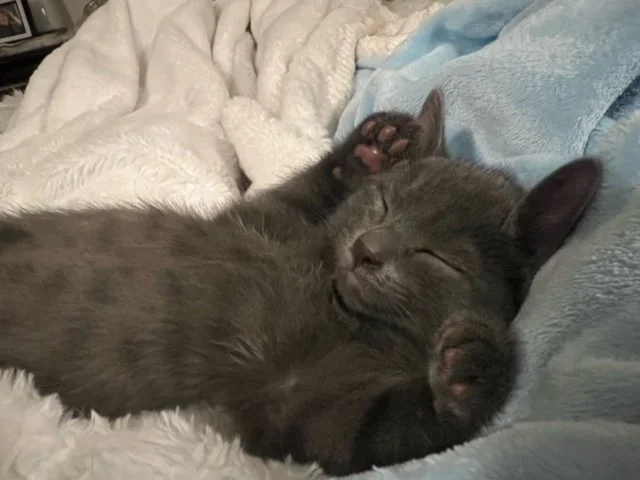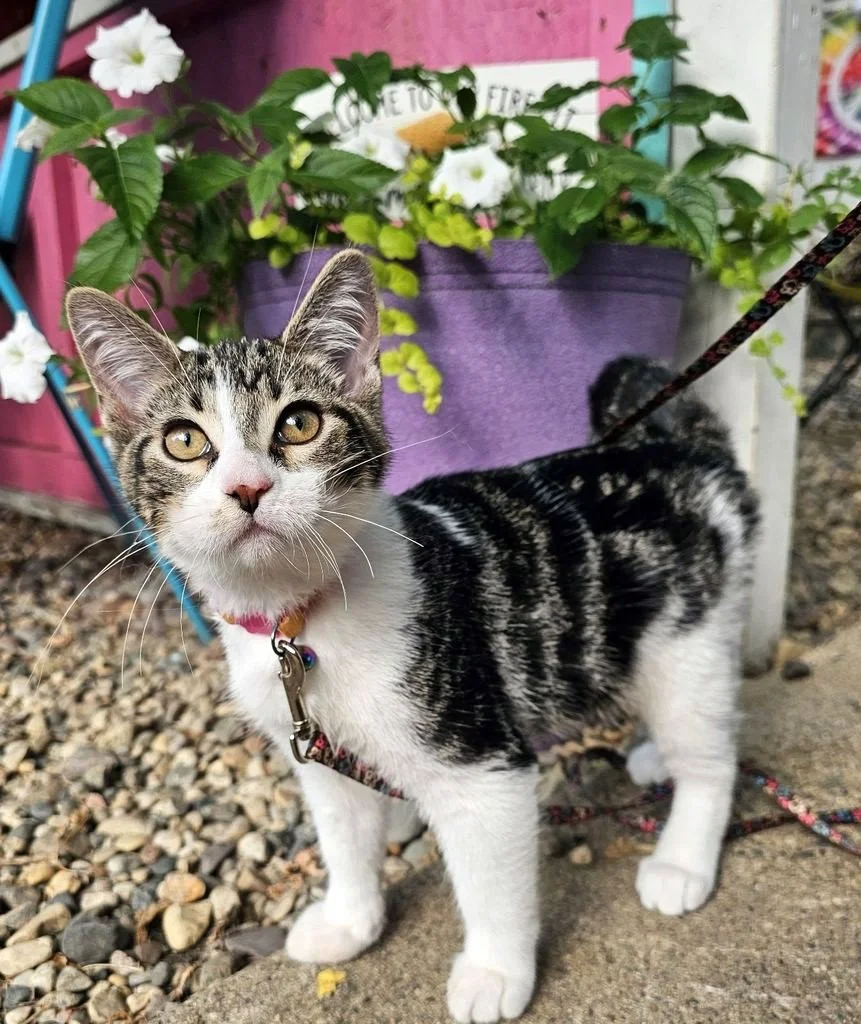Top 5 reasons for returning cats
/Regina Cat Rescue (RCR) can boast hundreds of successful adoptions a year, but there’s a small number of cats that are returned to RCR through no fault of their own. We're sharing the top five reasons that cats are returned to RCR to improve adoption outcomes for all cats and kittens!
1. Inappropriate elimination. This is the most common reason for returning cats, but it's rarely the cat's fault. Cats may urinate outside the litter box due to:
A painful urinary tract infection or crystals (more common in males) because they associate the discomfort of the condition with the litter box.
The condition or location of the litter box. This can range from a litter box that isn’t kept clean enough to the type of litter used. Boxes located in a laundry or utility room or next to a noisy appliance or furnace is enough to be off-putting to some cats.
Changes in the household. Cats can be sensitive to changes in the home like introducing a new pet, new addition to the family like a baby or house guest, or home renovations - even something as simple as rearranging furniture.
Stress in the home. Cats often feed off the energy of their owners. They can’t communicate the source of their distress so they let people know by peeing outside the box.
Stray or outdoor cats in the neighbourhood that tease the cat through a window.
The vast majority of cats returned to RCR for inappropriate elimination don't have urinary tract infections and do fine in a new environment, but it's a good idea to start with a visit to the veterinary to eliminate a physical cause like illness.
2. Failure to integrate with other animals. Most of our rescued cats are fostered in homes with other cats - so we understand the potential challenges of integration. It’s not always easy introducing a new cat to an existing one as cats can be territorial, but it can be done and when done properly, most cats can learn to get along very well or at least co-exist peacefully. Proper integration may seem a like a lot of work but it's worth a week or two of effort to ensure the long-term happiness and harmony of the household. Learn more about about welcoming a new pet to your family.
3. Moving and can’t find pet-friendly housing. This is a sad but all too common problem. Some provinces, like Ontario, have legislation that prohibits landlords from refusing to rent to people with pets, but that isn't the case in Saskatchewan. Many rentals and condo associations don’t allow pets which makes it hard to find pet-friendly accommodations. But there are property management companies like Boardwalk and Altern and many private rentals that do. If you need to move and are looking for a rental, be sure to start your search early and be prepared to pay a pet deposit.
4. Allergies. RCR has had cats returned several years after adoption due to allergies. This is usually because of the addition of a new family member through marriage, childbirth, etc. Occasionally, allergies set in later in life for some people. It's a good idea to confirm that it’s a cat allergy. We have had cats returned due to allergies, but later the adopter learns that the allergy wasn't to cats at all, but due to something else in the environment. This list is from PetFinder.com and provides some of the most effective ways to help cope with cat allergies:
Designate your bedroom as a cat-free zone. Begin your program of allergen reduction by washing bedding, drapes and pillows. Better yet, replace them. Use plastic covers that are designed to prevent allergens from penetrating on your mattress and pillows. Allergen-proof covers are available from medical supply outlets. Don’t expect results overnight. Cat allergens are one-sixth the size of pollens, and it may take months to reduce them significantly.
Restrict your cat’s access to designated areas inside your home. If you have a safe outdoor enclosure, allow your cat some time outside where dander will waft away in the wind. Brush your cat in the fresh-air enclosure to prevent loose, allergen-carrying hair from dispersing through your home.
Eliminate allergen traps such as upholstered furniture and rugs. Carpet can accumulate up to 100 times the amount of cat allergens as hardwood flooring, so replacing the wall-to-wall with wood will keep allergens from accumulating as much. If ripping up the carpet is not an option, have it steam cleaned as often as needed.
Vacuuming blows as many allergens through the air as it removes, so when you vacuum, use an allergen-proof vacuum cleaner bag or a vacuum cleaner with a high efficiency particulate arresting (HEPA) filter.
Get some fresh air. Highly insulated homes trap allergens as well as heat, so open the windows to increase the ventilation in your home, and run window fans on exhaust. (But remember to always screen windows so kitty stays safely indoors.) Also, clean the air inside your home. Although nothing will remove all of the allergens present, running an air cleaner with a HEPA filter will help.
Wipe the dander away. Daily use of products such as Pal’s Quick Cleansing Wipes™ will remove saliva and dander from your cat’s hair and are less stressful for felines who prefer not to be rubbed in the tub.
Spray allergens away. Anti-allergen sprays are a convenient way to deactivate allergens, including those produced by pets. Allersearch ADS, made from plant-based, non-toxic substances, can be sprayed throughout the house to take the sting out of household dust by rendering allergens harmless.
Clean the cat box. Cat allergen is found in urine and is left in the litter box when your cat makes a deposit. To help prevent allergic reactions to the litter box, use a brand of litter that is less dusty and have someone in the household who is not allergenic clean the box.
Take your medicine. Over-the-counter or prescription antihistamines, decongestants, eye drops and aerosol inhalers will help reduce the symptoms, although they do not eliminate the allergy. If you prefer to take a holistic approach, try Nettle tea, a bioflavinoid called quercetin or acupuncture. In recent studies antioxidants such as Vitamins C and E have demonstrated significant anti-allergen effects.
Get tested. An allergy specialist can determine the exact source of your allergic reactions by a simple prick of the skin on your arm or back.
Build up resistance. There is no cure for allergy to cats, but immunotherapy may help increase your tolerance. Immunotherapy involves getting allergy shots once or twice weekly for up to six months, then monthly boosters for three to five years. Some individuals develop complete immunity, while others continue to need shots, and still others find no relief at all.
5. Sudden aggression on the part of the cat. This is almost always attributed to unresolved medical issues such as painful bladder infections or other painful conditions. RCR has accepted a number of adopted cats back into our care due to complaints of sudden aggression only to find easily resolvable issues that can be taken care of with a simple antibiotic (for a bladder infection) or other treatment. Aggression can also be caused by attempts to discipline from the caregiver. Some cat owners try various methods to discipline or correct their cat’s behaviour, but it can backfire and make things worse. Sudden unexplained aggression should always be referred to a vet for proper diagnosis.












